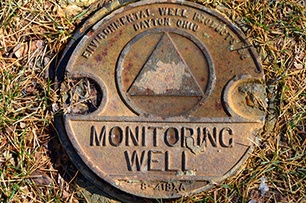Once all the work is done in getting a monitoring well rig up and running, it seems so easy to just let it go. It’s doing its job and it’s time to go on to installing the next well. Unfortunately, rig equipment is mechanical and, like any other machine, rigs will endure wear and tear. That can lead to premature equipment failure and potential contamination of the well. With proper maintenance you can safely operate drilling rigs for years. Much like a drilling rig groundwater wells need maintenance.
Here are some of the common issues that monitoring wells can face throughout their lifetime of service:
- Fine particle build-up: The water in monitoring wells remains largely unpumped, which is very different from typical water wells. Because the water is not pumped regularly, the well can accumulate fine particles, which contaminate the samples taken from it.
- Loss of hydraulic connection to water table: Over time, the case and screening around the well can become clogged with chemical and bio-chemical precipitates. This leads to a disconnect between the well and the water table in the surrounding soil.
- Degradation of the well casing: Metal well casings can begin to degrade when the water in the well reaches a pH of 6 or below. PVC well casings can degrade when in the presence of certain chemicals. As the casing deteriorates, it can start affecting the validity of samples taken from the well.
- Build-up of sediment on the bottom of the well: Over time, sediment in the well can build up at the bottom. In time, this level of deposit material can get to the point where it affects the sampling from the water table.
- Turbidity in the monitoring well: Turbidity means there is an increased level of sediment floating and circulating within the water that causes problems with unbiased sampling.
Doing Routine Maintenance
Over the lifetime of the well, doing routine maintenance can keep the well's sampling intact. Periodic maintenance includes:
- Taking periodic checks of the well's depth. This helps to detect if sediments are building up on the bottom.
- Checking water level, turbidity, and yield trends. If the screen is becoming clogged, water levels may start to go down and stay down.
- Surging and brushing the well periodically. This will ensure the well still has a good connection to the water table. It also clears away some of the scale build-up on the well screen.
- Checking the well casing and seal's integrity. A break in the casing or seal can cause surface water or water from different aquifers to enter the monitoring well and contaminate the sampling.
Call on Talon/LPE Drilling Services to handle all of your routine monitor well checks and maintenance.

